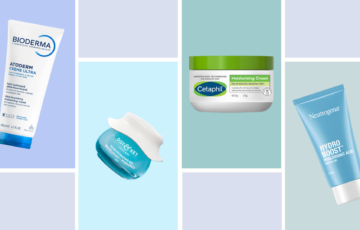Before filling your vanity with the newest moisturisers or serums, there’s one quiet truth worth absorbing: everything becomes easier once you know your skin type. It sounds almost too simple, yet this single piece of awareness can shift an entire routine from guesswork to something that finally feels aligned. After all, glowing skin isn’t just created by what you apply, but by understanding what your complexion genuinely asks for.
Why Your Skin Type Matters More Than You Think
Imagine caring for a favourite fabric. You wouldn’t wash silk the same way you wash denim. Skin behaves much the same way. A cream that comforts one person might overwhelm another. A cleanser that clears someone else’s breakouts might leave you feeling uncomfortably stretched.
When you know your skin type, products stop feeling like “hits or misses.” Cleansers begin balancing rather than stripping. Moisturisers hydrate without suffocating. Actives enhance radiance without surprise irritation. It’s not about owning more skincare, but about choosing better.
The Bare-Faced Test: Your Simple Starting Point
If you’re standing in front of a mirror debating whether you’re oily, dry, or combination, there’s a fuss-free test that dermatologists often recommend. Just follow these steps:
- Cleanse using a gentle face wash.
- Pat dry and resist applying anything, no toner, no serum, no cream.
- Wait an hour.
After sixty minutes, examine your skin closely:
- Feels tight or shows flaky patches? You’re likely dry.
- Shiny forehead, nose, and chin, but matte cheeks? That’s combination.
- Shiny all over? You’re in the oily family.
Still not convinced? Take blotting paper, press it against different spots, and check the marks. Oil on the T-zone only suggests combination skin. Oil everywhere signals an oily type. No oil at all? Dry skin wins the vote.
Breaking Down Each Skin Type
Understanding the category you fall into makes the next steps far smoother. Here’s what each type typically experiences and what works well for it.
Oily Skin
Oily skin gets its name from excess sebum production, which can lead to shine, clogged pores, and the occasional breakout. But there’s a silver lining: this skin type often maintains elasticity for longer, helping it age gracefully.
What helps:
- Lightweight, gel-based moisturisers
- Non-comedogenic formulas
- Balancing ingredients like niacinamide and salicylic acid
The goal is not to strip oil away, but to regulate it without disrupting your natural moisture barrier.
Dry Skin
Dry skin often feels parched, dull, or tight, especially right after cleansing. It needs comfort, nourishment, and formulas that help rebuild the skin barrier.
What helps:
- Creamy, gentle cleansers
- Hydrating serums and mists
- Moisturisers rich in ceramides, glycerin, hyaluronic acid, and squalane
Avoid alcohol-heavy toners or over-exfoliating. Dry skin thrives on softness, not harshness.
Combination Skin
Combination skin behaves like two personalities in one. The T-zone leans oily, while the cheeks stay normal or dry. It’s common, but also a little tricky because different areas need different things.
What helps:
- Lightweight, balancing moisturisers
- Multi-masking: clay on oily zones, hydration on dry spots
- Products that hydrate without feeling heavy
Think of combination skin as an exercise in harmony rather than control.
When Your Skin Type Changes (Because It Will)
Here’s something skincare experts openly admit: skin type isn’t fixed. It shifts. Sometimes subtly, sometimes dramatically. Heat and humidity may trigger oiliness, while winter winds can make even normally balanced skin feel parched. Hormonal changes, stress, medication, travel, and diet can all play a role too.
A product that once felt perfect might suddenly seem off. A cleanser might begin to feel too strong. A moisturiser might feel heavier than it used to. Instead of sticking rigidly to the same routine, listen to the signals. Skin speaks, quietly, but consistently.
Building a Routine That Works for You
Once you know your skin type, building a routine becomes more intuitive. The three-step foundation remains the same, cleanse, hydrate, protect, but how you approach each step shifts depending on your needs.
For oily skin:
Choose gentle foaming cleansers, oil-balancing serums, gel moisturisers, and always finish with SPF.
For dry skin:
Opt for cream cleansers, hydrating serums, rich moisturisers, and nourishing SPF formulas.
For combination skin:
Go for light layers, gel creams, balancing toners, and SPF that doesn’t feel greasy.
The more personalised your routine becomes, the more your skin settles into a state of comfort and clarity.
Learning to Listen to Your Skin
Skincare isn’t a strict set of rules; it’s an ongoing conversation. Your complexion reacts to sleep, stress, weather, products, and even your mood at times. Tightness, oiliness, sensitivity, dullness, these aren’t flaws, they’re signals.
The goal isn’t perfect skin. It’s healthy skin that behaves predictably and feels comfortable to live in. Once you learn to read those signals, each product you choose becomes an act of alignment rather than correction.
Dreaming of your next big break? Join Dazzlerr and connect instantly with recruiters, brands, and casting agencies across India.
Your opportunity is one click away!


















